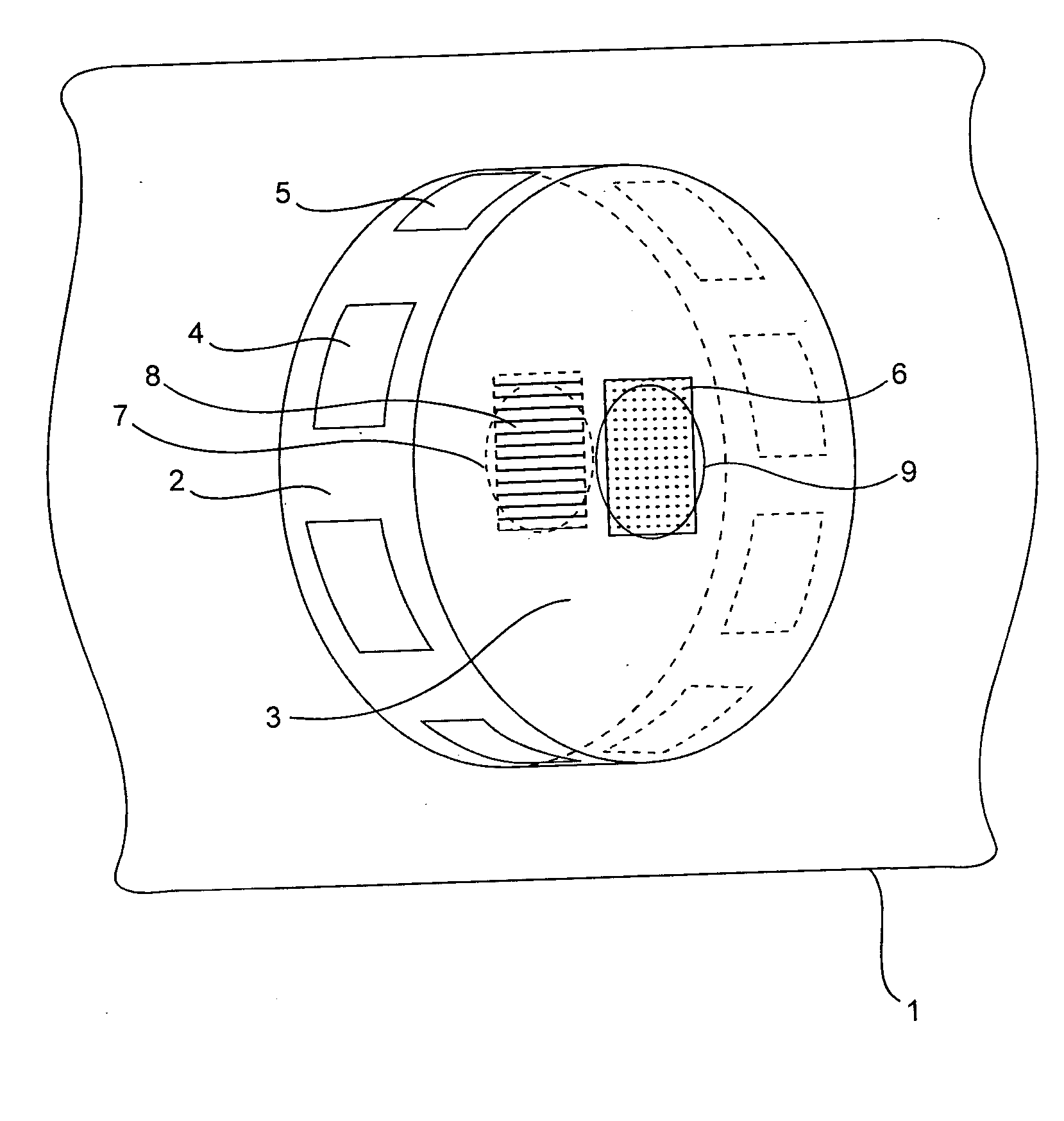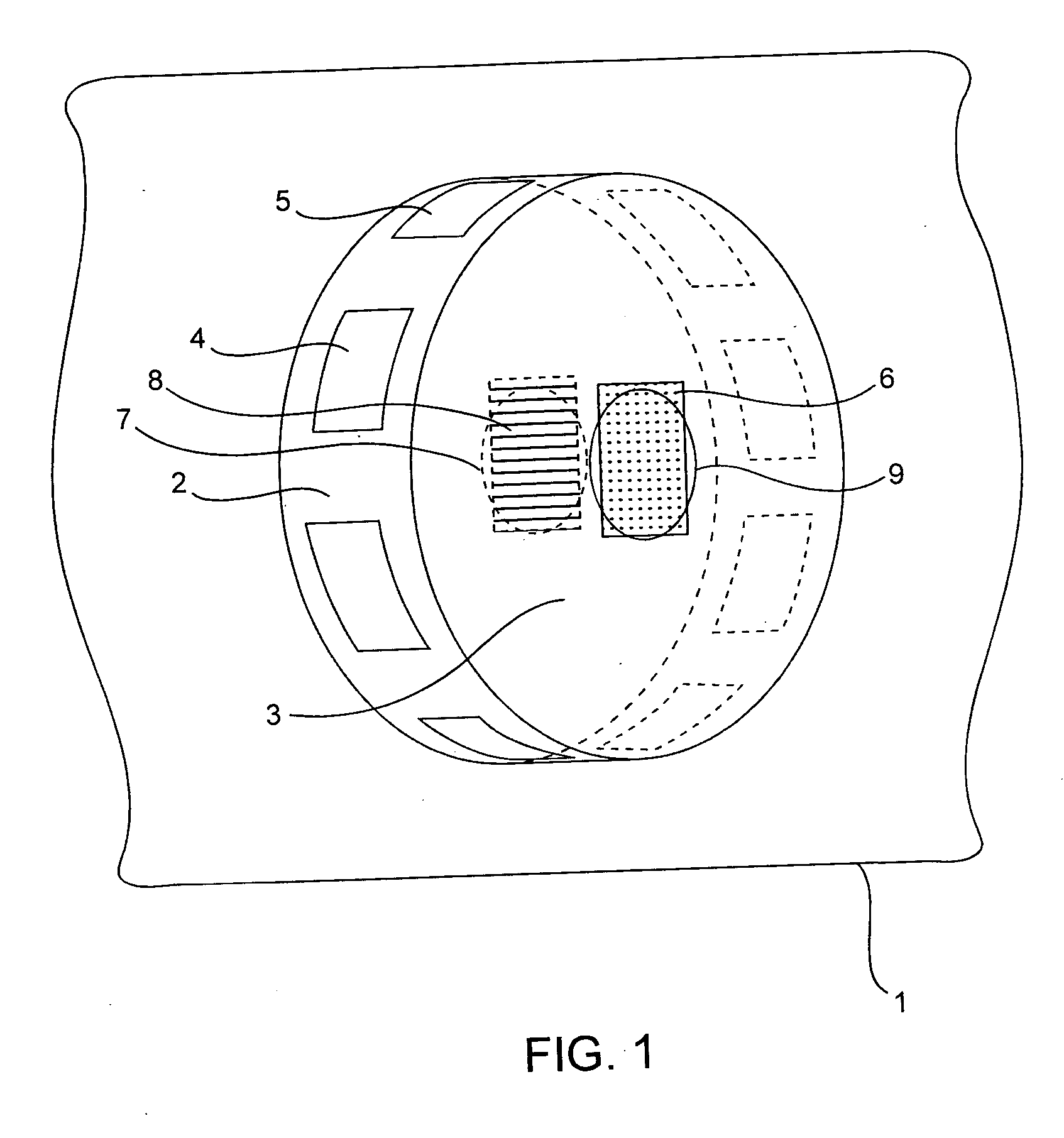Method to reduce damage caused by irradiation of halogenated polymers
a technology of halogenated polymers and irradiation, which is applied in the field of packaging, can solve the problems of adverse effects and adverse effects of materials, and achieve the effect of less subject to deterioration over tim
- Summary
- Abstract
- Description
- Claims
- Application Information
AI Technical Summary
Benefits of technology
Problems solved by technology
Method used
Image
Examples
specific embodiments
[0128]FIG. 1 is a schematic view of the embodiments of the invention. Specifically, FIG. 1 shows an outer package 1 which may be in the form of a plastic bag comprised of one or more polymer materials which materials are substantially impermeable to inert gas which may be present inside the package 1 and contaminants which may be present outside the package 1. The package holds the polymer component 2 which here is in the form of laminated film (100-1500 ft) mounted on a plastic spool. The polymer component in the form of a tape 2 may be wound around the polymer spool 3. The spool 3 includes oval shaped openings 7 and 9. Single or multiple openings of any shape may be used. The roll of film may be in the form of a plurality of separate components or subcomponents. The components may be polymeric containers for pharmaceuticals. The components may be used as nozzles for aerosolized delivery of drugs. Examples of containers and nozzles are disclosed and described in U.S. Pat. Nos. 5,70...
example 1
[0134] A blister film laminate comprising of polychlorotrifluoroethylene (PCTFE) and ethylene acrylic acid (EAA) was tested by exposure to gamma irradiation dose of 25-35 kGy in air and by using an inert environment and a HF, HCl scavenger-based process. Irradiation of such laminate stuctures results in formation of F−& Cl− based reactive species that continue to degrade the film stored inside a sealed container during post-irradiation shelf life.
[0135] The sterilization packages was made by placing the roll of blister film laminate (300-1200 ft) mounted on a reel in three polyethylene bags (20′×20′) and then heat-sealing all three bags. In the control condition no scavengers were placed and the environment inside the triple-bagged package was ambient. The inert environment for gamma processing was created by using oxygen and HF / HCl adsorbents as follows:
Oxygen Adsorbent:
[0136] Freshpax Type D-500. Manufacturer: Multisorb Technologies, NY Each packet is capable of adsorbing 500 ...
PUM
| Property | Measurement | Unit |
|---|---|---|
| thick | aaaaa | aaaaa |
| thick | aaaaa | aaaaa |
| melting point | aaaaa | aaaaa |
Abstract
Description
Claims
Application Information
 Login to View More
Login to View More - R&D
- Intellectual Property
- Life Sciences
- Materials
- Tech Scout
- Unparalleled Data Quality
- Higher Quality Content
- 60% Fewer Hallucinations
Browse by: Latest US Patents, China's latest patents, Technical Efficacy Thesaurus, Application Domain, Technology Topic, Popular Technical Reports.
© 2025 PatSnap. All rights reserved.Legal|Privacy policy|Modern Slavery Act Transparency Statement|Sitemap|About US| Contact US: help@patsnap.com


